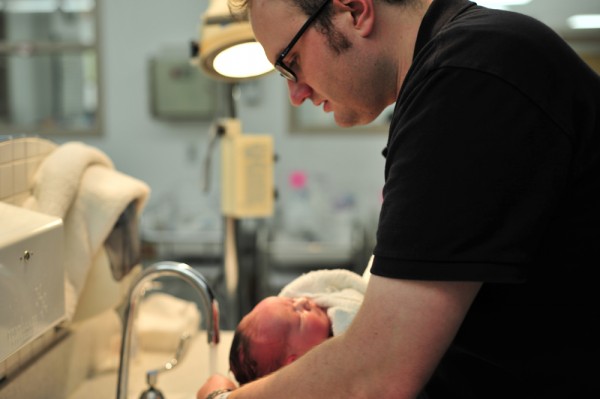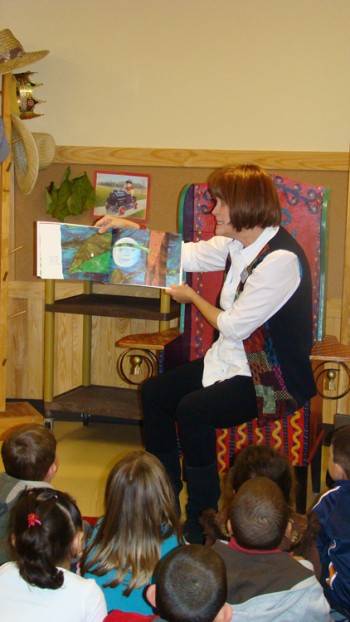7.9: Agents of Socialization
- Page ID
- 60142
\( \newcommand{\vecs}[1]{\overset { \scriptstyle \rightharpoonup} {\mathbf{#1}} } \)
\( \newcommand{\vecd}[1]{\overset{-\!-\!\rightharpoonup}{\vphantom{a}\smash {#1}}} \)
\( \newcommand{\id}{\mathrm{id}}\) \( \newcommand{\Span}{\mathrm{span}}\)
( \newcommand{\kernel}{\mathrm{null}\,}\) \( \newcommand{\range}{\mathrm{range}\,}\)
\( \newcommand{\RealPart}{\mathrm{Re}}\) \( \newcommand{\ImaginaryPart}{\mathrm{Im}}\)
\( \newcommand{\Argument}{\mathrm{Arg}}\) \( \newcommand{\norm}[1]{\| #1 \|}\)
\( \newcommand{\inner}[2]{\langle #1, #2 \rangle}\)
\( \newcommand{\Span}{\mathrm{span}}\)
\( \newcommand{\id}{\mathrm{id}}\)
\( \newcommand{\Span}{\mathrm{span}}\)
\( \newcommand{\kernel}{\mathrm{null}\,}\)
\( \newcommand{\range}{\mathrm{range}\,}\)
\( \newcommand{\RealPart}{\mathrm{Re}}\)
\( \newcommand{\ImaginaryPart}{\mathrm{Im}}\)
\( \newcommand{\Argument}{\mathrm{Arg}}\)
\( \newcommand{\norm}[1]{\| #1 \|}\)
\( \newcommand{\inner}[2]{\langle #1, #2 \rangle}\)
\( \newcommand{\Span}{\mathrm{span}}\) \( \newcommand{\AA}{\unicode[.8,0]{x212B}}\)
\( \newcommand{\vectorA}[1]{\vec{#1}} % arrow\)
\( \newcommand{\vectorAt}[1]{\vec{\text{#1}}} % arrow\)
\( \newcommand{\vectorB}[1]{\overset { \scriptstyle \rightharpoonup} {\mathbf{#1}} } \)
\( \newcommand{\vectorC}[1]{\textbf{#1}} \)
\( \newcommand{\vectorD}[1]{\overrightarrow{#1}} \)
\( \newcommand{\vectorDt}[1]{\overrightarrow{\text{#1}}} \)
\( \newcommand{\vectE}[1]{\overset{-\!-\!\rightharpoonup}{\vphantom{a}\smash{\mathbf {#1}}}} \)
\( \newcommand{\vecs}[1]{\overset { \scriptstyle \rightharpoonup} {\mathbf{#1}} } \)
\( \newcommand{\vecd}[1]{\overset{-\!-\!\rightharpoonup}{\vphantom{a}\smash {#1}}} \)
\(\newcommand{\avec}{\mathbf a}\) \(\newcommand{\bvec}{\mathbf b}\) \(\newcommand{\cvec}{\mathbf c}\) \(\newcommand{\dvec}{\mathbf d}\) \(\newcommand{\dtil}{\widetilde{\mathbf d}}\) \(\newcommand{\evec}{\mathbf e}\) \(\newcommand{\fvec}{\mathbf f}\) \(\newcommand{\nvec}{\mathbf n}\) \(\newcommand{\pvec}{\mathbf p}\) \(\newcommand{\qvec}{\mathbf q}\) \(\newcommand{\svec}{\mathbf s}\) \(\newcommand{\tvec}{\mathbf t}\) \(\newcommand{\uvec}{\mathbf u}\) \(\newcommand{\vvec}{\mathbf v}\) \(\newcommand{\wvec}{\mathbf w}\) \(\newcommand{\xvec}{\mathbf x}\) \(\newcommand{\yvec}{\mathbf y}\) \(\newcommand{\zvec}{\mathbf z}\) \(\newcommand{\rvec}{\mathbf r}\) \(\newcommand{\mvec}{\mathbf m}\) \(\newcommand{\zerovec}{\mathbf 0}\) \(\newcommand{\onevec}{\mathbf 1}\) \(\newcommand{\real}{\mathbb R}\) \(\newcommand{\twovec}[2]{\left[\begin{array}{r}#1 \\ #2 \end{array}\right]}\) \(\newcommand{\ctwovec}[2]{\left[\begin{array}{c}#1 \\ #2 \end{array}\right]}\) \(\newcommand{\threevec}[3]{\left[\begin{array}{r}#1 \\ #2 \\ #3 \end{array}\right]}\) \(\newcommand{\cthreevec}[3]{\left[\begin{array}{c}#1 \\ #2 \\ #3 \end{array}\right]}\) \(\newcommand{\fourvec}[4]{\left[\begin{array}{r}#1 \\ #2 \\ #3 \\ #4 \end{array}\right]}\) \(\newcommand{\cfourvec}[4]{\left[\begin{array}{c}#1 \\ #2 \\ #3 \\ #4 \end{array}\right]}\) \(\newcommand{\fivevec}[5]{\left[\begin{array}{r}#1 \\ #2 \\ #3 \\ #4 \\ #5 \\ \end{array}\right]}\) \(\newcommand{\cfivevec}[5]{\left[\begin{array}{c}#1 \\ #2 \\ #3 \\ #4 \\ #5 \\ \end{array}\right]}\) \(\newcommand{\mattwo}[4]{\left[\begin{array}{rr}#1 \amp #2 \\ #3 \amp #4 \\ \end{array}\right]}\) \(\newcommand{\laspan}[1]{\text{Span}\{#1\}}\) \(\newcommand{\bcal}{\cal B}\) \(\newcommand{\ccal}{\cal C}\) \(\newcommand{\scal}{\cal S}\) \(\newcommand{\wcal}{\cal W}\) \(\newcommand{\ecal}{\cal E}\) \(\newcommand{\coords}[2]{\left\{#1\right\}_{#2}}\) \(\newcommand{\gray}[1]{\color{gray}{#1}}\) \(\newcommand{\lgray}[1]{\color{lightgray}{#1}}\) \(\newcommand{\rank}{\operatorname{rank}}\) \(\newcommand{\row}{\text{Row}}\) \(\newcommand{\col}{\text{Col}}\) \(\renewcommand{\row}{\text{Row}}\) \(\newcommand{\nul}{\text{Nul}}\) \(\newcommand{\var}{\text{Var}}\) \(\newcommand{\corr}{\text{corr}}\) \(\newcommand{\len}[1]{\left|#1\right|}\) \(\newcommand{\bbar}{\overline{\bvec}}\) \(\newcommand{\bhat}{\widehat{\bvec}}\) \(\newcommand{\bperp}{\bvec^\perp}\) \(\newcommand{\xhat}{\widehat{\xvec}}\) \(\newcommand{\vhat}{\widehat{\vvec}}\) \(\newcommand{\uhat}{\widehat{\uvec}}\) \(\newcommand{\what}{\widehat{\wvec}}\) \(\newcommand{\Sighat}{\widehat{\Sigma}}\) \(\newcommand{\lt}{<}\) \(\newcommand{\gt}{>}\) \(\newcommand{\amp}{&}\) \(\definecolor{fillinmathshade}{gray}{0.9}\)Learning Outcomes
- Examine the roles of agents of socialization, such as families, peer groups, and institutional agents
Socialization helps people learn to function successfully in their social worlds. How does the process of socialization occur? How do we learn to use the objects of our society’s material culture? How do we come to adopt the beliefs, values, and norms that represent its nonmaterial culture? This learning takes place through interaction with various agents of socialization, like peer groups and families, plus both formal and informal social institutions.
Agents of Socialization
Social groups often provide the first experiences of socialization. Families, and later peer groups, communicate expectations and reinforce norms. People first learn to use the tangible objects of material culture in these settings, as well as being introduced to the beliefs and values of society.
Family
Family is the first agent of socialization. What constitutes family is also socially constructed and may or may not exclusively refer to blood relatives. Family may include neighbors and/or close friends, but more typically includes parents, siblings, grandparents, aunts, uncles, cousins, etc. These family members teach a child what he or she needs to know. For example, they show the child how to use objects such as clothes, computers, eating utensils, books, or bikes; how to relate to others (some as “family,” others as “friends,” still others as “strangers” or “teachers” or “neighbors”); and how the world works (what is “real” and what is “imagined”). As you are aware, either from your own experience as a child and/or from your role in helping to raise one, socialization includes teaching and learning about an unending array of objects and ideas.
Keep in mind, however, that families do not socialize children in a vacuum. Many social factors affect the way a family raises its children. For example, we can use the sociological imagination to recognize that individual behaviors are affected by the historical period in which they take place. For example, people raised in the 1940s (perhaps your grandparents or great grandparents) did not have televisions in their homes but people raised in the 1950s and 1960s typically did. Today, parents are deciding when to buy their child a cell phone, how much “screen time” they can have in a day, and are using all types of technology to monitor their children, from location tracking apps to Internet filters. Not only are families demonstrating norms related to technology through their own modeling and ongoing process of socialization, but they are also teaching norms and values explicitly.
Sociologists recognize that race, social class, religion, and other factors play an important role in socialization. For example, poor families usually emphasize obedience and conformity when raising their children, while wealthy families emphasize judgment and creativity (National Opinion Research Center 2008). This may occur because working-class parents have less education and often occupy repetitive-task jobs for which it is helpful to be able to follow rules and conform. Wealthy parents tend to have better educations and often work in managerial positions or careers that require creative problem solving, so they teach their children behaviors that are beneficial in these positions. This means children are effectively socialized and raised to take the types of jobs their parents already have, thus reproducing the class system (Kohn 1977). Likewise, children are socialized to abide by gender norms, perceptions of race, and class-related behaviors.

In Sweden, for instance, stay-at-home fathers are an accepted part of the social landscape. A government policy provides subsidized time off work—480 days for families with newborns—with the option of the paid leave being shared between mothers and fathers. As one stay-at-home dad says, being home to take care of his baby son “is a real fatherly thing to do. I think that’s very masculine” (Associated Press 2011). Close to 90 percent of Swedish fathers use their paternity leave (about 340,000 dads); on average they take seven weeks per birth (The Economist, 2014). How do U.S. policies—and our society’s expected gender roles—compare? How will Swedish children raised this way be socialized to parental gender norms? How might that be different from parental gender norms in the United States?
Peer Groups
A peer group is made up of people who are similar in age and social status and who share interests. Peer group socialization begins in the earliest years, such as when kids on a playground teach younger children the norms about taking turns, the rules of a game, or how to shoot a basket. As children grow into teenagers, this process continues. Peer groups are important to adolescents in a new way, as they begin to develop an identity separate from their parents and exert independence. Additionally, peer groups provide their own opportunities for socialization since kids usually engage in different types of activities with their peers than they do with their families.
The way peer groups interact has also changed over time with technological advances. Thirty years ago, kids played Nintendo or Sega but they were not “online.” If they wanted to play video games with others, they had to arrange it. Today, kids are playing video games with people from all over the world with a few clicks. Their peer group might include people they have never met outside of video games or social media.
Peer groups provide adolescents’ first major socialization experience outside the realm of their families. Interestingly, studies have shown that although friendships rank high in adolescents’ priorities, this is balanced by parental influence.
Institutional Agents
The social institutions of our culture also inform our socialization. Formal institutions—like schools, workplaces, and the government—teach people how to behave in and navigate these systems. Other institutions, like the media, contribute to socialization by inundating us with messages about norms and expectations.

School
Most U.S. children spend about seven hours a day, 180 days a year, in school, which makes it hard to deny the importance school has on their socialization (U.S. Department of Education 2004). Students are not in school only to study math, reading, science, and other subjects–the manifest function of this system–schools also serve a latent function in society by socializing children into behaviors like practicing teamwork, following a schedule, and using textbooks.
School and classroom rituals, led by teachers serving as role models and leaders, regularly reinforce what society expects from children. Sociologists describe this aspect of schools as the hidden curriculum, the informal teaching done by schools. For example, in the United States, schools have built a sense of competition into the way grades are awarded and the way teachers evaluate students (Bowles and Gintis 1976). When children participate in a relay race or a math contest, they learn there are winners and losers in society. When children are required to work together on a project, they practice teamwork with other people in cooperative situations. The hidden curriculum prepares children for the adult world. Children learn how to deal with bureaucracy, rules, expectations, waiting their turn, and sitting still for hours during the day. Schools in different cultures socialize children differently in order to prepare them to function well in those cultures. The latent functions of teamwork and dealing with bureaucracy are features of U.S. culture. Schools also have structures in place to reward students for attendance and timeliness and to punish students for absenteeism and lateness. For young children, who are often unable to get themselves to school and rely on their families, this can unfairly punish young students who have little control over when they arrive at school.
Schools also socialize children by teaching them about citizenship and national pride. In the United States, children are taught to say the Pledge of Allegiance. Most districts require classes about U.S. history and geography. As academic understanding of history evolves, textbooks in the United States have been scrutinized and revised to update attitudes toward other cultures as well as perspectives on historical events; thus, children are more effectively socialized to a more inclusive world history than earlier textbooks might have offered. For example, information about the mistreatment of African Americans and Native Americans more accurately reflects those events compared to past textbooks. However, the experience of Latinos, Blacks, and Asian Americans is still neglected in many standard textbooks.
Further Research
Watch this clip of Belissa Escoloedo, Zariya Allen, and Rhiannan McGavin as they present their poem “Somewhere in America” at the 2014 Brave New Voices Poetry Slam. Look for examples of the hidden curriculum in public schools.
An interactive or media element has been excluded from this version of the text. You can view it online here: http://pb.libretexts.org/its/?p=174
Controversial Textbooks
On August 13, 2001, twenty South Korean men gathered in Seoul. Each chopped off one of his own fingers because of textbooks. These men took drastic measures to protest eight middle school textbooks approved by Tokyo for use in Japanese middle schools. According to the Korean government (and other East Asian nations), the textbooks glossed over negative events in Japan’s history at the expense of other Asian countries.
In the early 1900s, Japan was one of Asia’s more aggressive nations. For instance, it held Korea as a colony between 1910 and 1945. Today, Koreans argue that the Japanese are whitewashing that colonial history through these textbooks. One major criticism is that they do not mention that, during World War II, the Japanese forced Korean women into sexual slavery. The textbooks describe the women as having been “drafted” to work, a euphemism that downplays the brutality of what actually occurred. Some Japanese textbooks dismiss an important Korean independence demonstration in 1919 as a “riot.” In reality, Japanese soldiers attacked peaceful demonstrators, leaving roughly 6,000 dead and 15,000 wounded (Crampton 2002).
Although it may seem extreme that people are so enraged about how events are described in a textbook that they would resort to self-dismemberment, the protest affirms that textbooks are a significant tool of socialization in state-run education systems.
The Workplace
Just as children spend much of their day at school, many adults at some point invest a significant amount of time at a place of employment. Although socialized into their culture since birth, workers require new socialization into a workplace, in terms of both material culture (such as how to operate the copy machine) and nonmaterial culture (such as whether it’s okay to speak directly to the boss or how to share the break room refrigerator).
Different jobs require different types of socialization. In the past, many people worked a single job until retirement. Today, the trend is to switch jobs at least once a decade. Between the ages of eighteen and forty-six, the average baby boomer of the younger set held 11.3 different jobs (U.S. Bureau of Labor Statistics, 2014). This means that people must become socialized to, and socialized by, a variety of work environments.
Religion
While some religions are informal institutions, here we focus on practices followed by formal institutions. Religion is an important avenue of socialization for many people. The United States is full of synagogues, temples, churches, mosques, and similar religious communities where people gather to worship and learn. Like other institutions, these places teach participants how to interact with the religion’s material culture (like a mezuzah, a prayer rug, or a communion wafer). For some people, important ceremonies related to family structure—like marriage and birth—are connected to religious celebrations. Many religious institutions also uphold gender norms and contribute to their enforcement through socialization. From ceremonial rites of passage that reinforce the family unit to power dynamics that reinforce gender roles, organized religion fosters a shared set of socialized values that are passed on through society.
Mass Media
Mass media distribute impersonal information to a wide audience, via television, newspapers, radio, and the Internet. With the average person spending over four hours a day in front of the television (and children averaging even more screen time), media greatly influence social norms (Roberts, Foehr, and Rideout 2005). People learn about objects of material culture (like new technology and transportation options), as well as nonmaterial culture—what is true (beliefs), what is important (values), and what is expected (norms).
Gender role socialization and animated films

Pixar is one of the largest producers of children’s movies in the world and has released large box office draws and hugely popular films such as Toy Story (1995) and its sequels (1999), (2010), and (2019), Monsters, Inc. (2001) and Monsters University (2013), Finding Nemo (2003) and Finding Dori (2016), Cars (2006) and its sequels (2011) and (2017), The Incredibles (2004) and its sequel (2018), Up (2009), Brave (2012), Inside Out (2015), and Coco (2017), just to name a few.
Disney, Pixar’s parent company, and Pixar were both criticized for not including female leads and in cases in which the star is a female (i.e. Snow White, Cinderella, The Little Mermaid, Beauty and the Beast, and Mulan) for reifying tropes like the princess who needs to be saved by a prince. In some cases, the female lead is captured (Belle in Beauty and the Beast) and mistreated by the male character who becomes a prince, or rendered mute as in The Little Mermaid, or in the case of Mulan, when a female is a war hero (dressed as a male), she is expected to be humble and go back to her domestic duties after the war.
Prior to Brave, Pixar films featured females as supporting characters and love interests. In Up, for example, the only human female character dies within the first ten minutes of the film. For the millions of girls watching Pixar films, there were few strong characters or roles for them to relate to but several recent films have changed and featured female leads. Brave, The Incredibles 2, Inside Out, and Coco all feature female lead characters. A closer examination of Riley Anderson in Inside Out reveals gendered emotions. Joy, sadness, and disgust are emotions personified by female voices whereas anger and fear are personified by male voices. Is this reifying the gender stereotypes of masculine and feminine emotions?
The Incredibles 2 (2018) features a working mom and a stay-at-home dad, a reversal of traditional gender role norms. Noticeably the mom is the lead in Incredibles 2 and the breadwinner whereas in The Incredibles she was supporting her husband’s efforts to save the world. Mom (Elastigirl) feels guilty for leaving her children to work, Dad (Mr. Incredible) feels overwhelmed and inadequate at times, and the kids are impressed with Mom’s efforts to save the world. Some of the gender role stereotypes from the 2004 film cannot be overcome, though. The name Elastigirl infantilizes a grown woman and some reviewers argued that she is overly sexualized and once again reifying the role of women as sexual objects in film (see New Yorker review of The Incredibles 2 that was shared on Twitter).
Think It Over
- Do you think it is important that parents discuss gender roles with their young children, or is gender a topic better left for later? How do parents consider gender norms when buying their children books, movies, and toys? How do you believe they should consider it?
- Based on your observations, when are adolescents more likely to listen to their parents or to their peer groups when making decisions? What types of dilemmas lend themselves toward one social agent over another?
Further Research
Most societies expect parents to socialize children into gender norms. See the controversy surrounding one Canadian couple’s refusal to raise their children with gender roles.
Glossary
- hidden curriculum:
- the informal teaching done in schools that socializes children to societal norms
- peer group:
- a group made up of people who are similar in age and social status and who share interests
- Modification, adaptation, and original content. Authored by: Sarah Hoiland for Lumen Learning. Provided by: Lumen Learning. License: CC BY: Attribution
- Agents of Socialization. Authored by: OpenStax CNX. Located at: https://cnx.org/contents/AgQDEnLI@12.1:MlbkT6dl/5-3-Agents-of-Socialization. License: CC BY: Attribution. License Terms: Download for free at http://cnx.org/contents/02040312-72c...9333f3e1d@3.49
- Somewhere in America by Los Angeles Team. Provided by: Brave New Voices (Finals). Located at: https://www.youtube.com/watch?v=OadZpUJv8Eg&feature=youtu.be. License: Other. License Terms: Standard YouTube License


